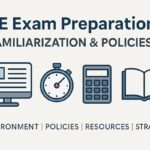- Course No E – 1426
- PDH Units 9.00
No data found for Custom Course Number
No data found for Custom Course Units
- Course No E – 1426
- PDH Units 9.00
Intended Audience: civil, geotechnical and environmental engineers and other professional engineers and construction managers
PDH UNITS: 9
This course provides an introduction to magnetic and subsurface methods for geophysical exploration. An overview of the spectrum of geophysical exploration methods is provided followed by more detailed discussions of magnetic and subsurface methods. Magnetic issues discussed include magnetometers, field intensities and subsurface metals. Subsurface methods discussed include in-hole logging, log analysis, borehole effects, spontaneous potential logging, single point resistance logging, normal resistivity logging, lateral resistivity logging, focused resistivity logging, dipmeter logging, induction logging, nuclear logging, gamma logging, gamma-gamma logging, neutron logging, acoustic logging, acoustic wave-form logging, cement-bond logging, acoustic televiewer logging, caliper logging, temperature logging, conductivity logging, flow logging, hydrophysical logging, and casing logging. Course Outline 1. INTRODUCTION 2. GEOPHYSICAL METHODOLOGY 3. MAGNETIC METHODS 4. SUBSURFACE GEOPHYSICAL METHODS This course will give environmental, geotechnical and civil engineers and other design and construction professionals an introduction to geophysical exploration methods using subsurface and magnetic techniques.
Learning Objectives
At the successful conclusion of this course, you’ll be able to identify and discuss:- Learn about the application of magnetometers;
- Learn about magnetic field intensities in the earth;
- Learn about identification and characterization of ferrous metals in the earth;
- Learn fundamentals of in-hole logging in general;
- Learn importance considerations in analysis of logging data;
- Learn about borehole effects that can skew in-hole data;
- Learn about logging limitations;
- Learn how to develop a logging program;
- Learn about qualitative and quantitative logging analysis;
- Learn about operation of logging equipment;
- Learn techniques for log quality control;
- Learn techniques for single point resistance logging;
- Learn when and where to employ normal resistivity logging;
- Learn about lateral resistivity logging; and
- Learn parameters for focused resistivity logging.
Once completed, your order and certificate of completion will be available in your profile when you’re logged in to the site.










